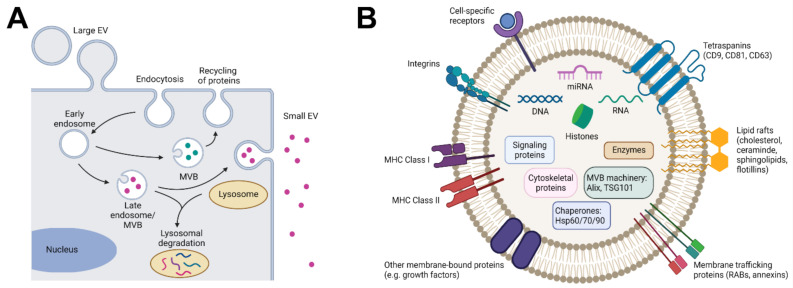Figure 2.
Schematic representation of the formation and composition of extracellular vesicles (EVs). (A) Large EVs are generated by budding from the plasma membrane. Small EVs originate in the endocytic pathway by the formation of an early endosome via endocytosis at the plasma membrane. Intraluminal vesicles are formed by the inward budding of the membrane of the late endosome or multivesicular body (MVB). MVBs are targeted for degradation by the lysosome or for secretion by fusion with the plasma membrane. This results in the release of small EVs in the extracellular space. (B) The membrane of small EVs contains proteins acquired during their biogenesis (G-proteins (Rabs), Flotillin-1 (FLOT1), etc.), as well as proteins involved in targeting recipient cells (integrins and tetraspanins (CD9, CD81, CD63)) and immune modulation (MHC Class I and MHC Class II receptors). The cytosolic cargo of small EVs includes cell-specific nucleic acids (DNAs, RNAs, miRNAs), histones (H4), proteins from the MVB machinery (ALIX, TSG101), chaperones (HSP70, HSP90, HSP60), signaling proteins (HIF-1α, β-catenin), enzymes (GAPDH, pyruvate) and cytoskeletal proteins (actin, tubulin). Figure created with Biorender.com, accessed on 28 March 2022.

